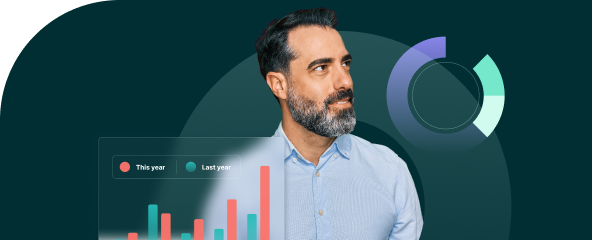
Understanding the Procurement Process: A Comprehensive Guide for 2024
The procurement process, often perceived as a straightforward sequence of events, entails much more than just locating, purchasing, receiving, and paying for goods. It’s a multifaceted business function comprising several stages, each offering opportunities for optimization.
In recent years, the digital transformation into procurement software has revolutionized procurement, enhancing cost efficiency, enabling real-time data analysis, and streamlining operations. According to the 2021 Deloitte Global Chief Procurement Officer Survey, operational efficiency remains a top priority for CPOs, with a significant emphasis on cost reduction and embracing digital transformation.
This article delves into the intricacies of the procurement process, highlighting how refining your procurement strategies can significantly influence your organization’s efficiency, productivity, and overall profitability.
Understanding procurement
We deep dive into “what is procurement”, but in essence, procurement encompasses the activities involved in acquiring the necessary goods, services, or works required for an organization to fulfill its business objectives. This process involves identifying needs, sourcing reliable suppliers, negotiating prices, executing purchases, and managing records for audit purposes.
The ultimate aim of procurement is to minimize expenses while ensuring timely acquisition of high-quality resources. The procurement function in any organization typically involves a blend of processes, personnel, and documentation.
-
Process:
Companies maintain a structured procurement cycle to guide all participants through the various stages, ensuring clarity on roles, responsibilities, and timelines.
-
People:
Decision-makers, often led by a Chief Procurement Officer (CPO), play a crucial role in executing procurement tasks, from placing orders to authorizing payments.
-
Paperwork:
Documentation is vital for tracking historical data, including payment terms, supplier performance, and contractual obligations, ensuring continuity even with staff changes.
Enhancing the procurement process in 2023
As we move forward, the procurement process continues to evolve, particularly with advancements in technology. For 2023, organizations are focusing on further enhancing the efficiency and effectiveness of their procurement processes by:
-
Leveraging Technology:
Implementing advanced procurement software solutions can automate routine tasks, provide valuable analytics, and improve accuracy and speed in the procurement process.
-
Sustainable Procurement:
More companies are prioritizing sustainability, ensuring their purchasing decisions reflect their commitment to environmental responsibility and ethical practices.
-
Supplier Diversity:
There is an increasing emphasis on diversifying the supplier base, including working with businesses owned by minorities, women, or veterans, and those that adhere to fair labor practices.
-
Risk Management:
Proactive risk assessment and management within the supply chain are becoming integral, especially considering global uncertainties and market volatility.
-
Skills Development:
Investing in procurement teams through training and development ensures they are equipped with the latest knowledge and best practices in procurement.
Procurement optimization offers a net positive ROI, every time
Investing in procurement optimization consistently yields a positive return on investment. Through strategic sourcing, cost savings, efficient operations, and risk mitigation, organizations can realize significant financial gains. The key is a holistic approach that considers not just the immediate costs but also the long-term value of procurement activities. By focusing on building strong supplier relationships, leveraging procurement technology for improved efficiency, and making data-driven decisions, businesses can ensure that every dollar invested in procurement optimization delivers tangible, positive returns.
Conclusion
Understanding and optimizing the procurement process is more critical than ever as we head into 2023. Organizations not only need to streamline their procurement activities but also need to be adaptable, strategic, and forward-thinking.
By embracing technology, focusing on sustainability, and investing in continuous improvement, companies can ensure that their procurement processes support their overall business objectives and contribute to their success in the competitive market landscape.
